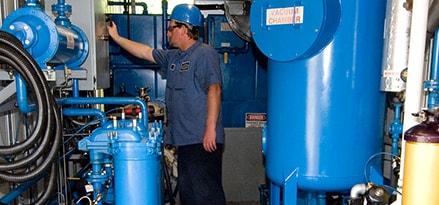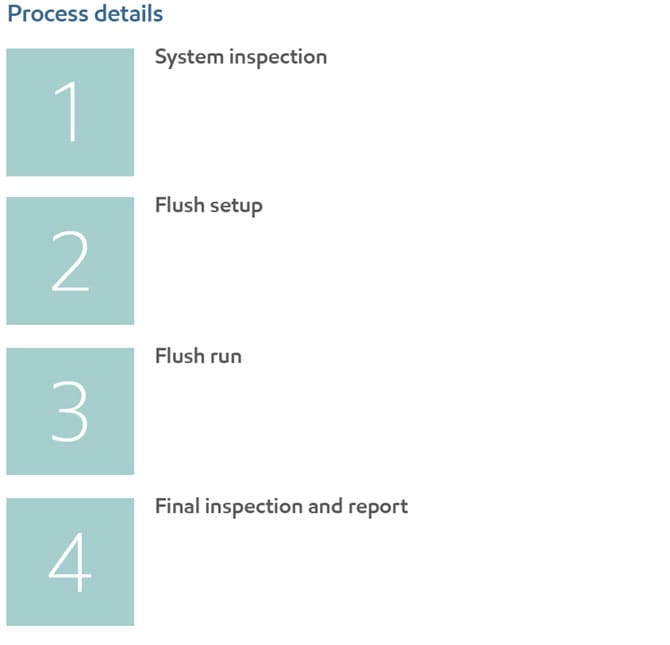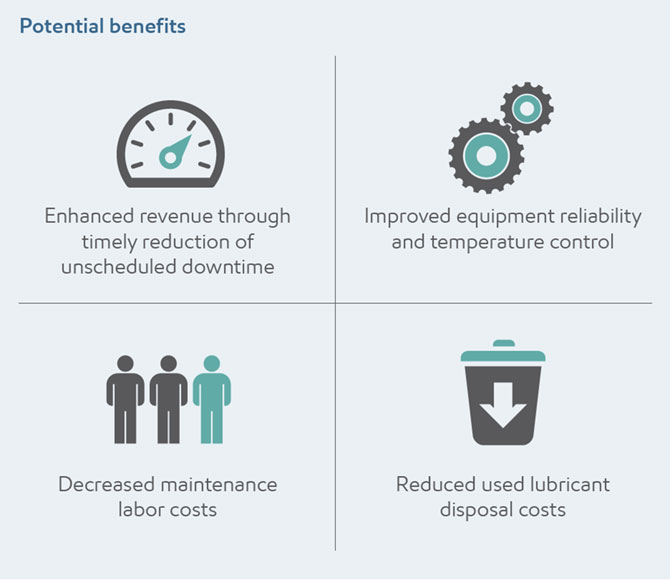Heat transfer system flush

Removing oxidation and carbon contamination from your heat transfer systems can improve equipment reliability and process efficiencies, helping you reduce operational costs and enhance productivity.
Description
Field engineers use their world-class expertise to inspect your equipment to assess the cleanliness of your heat transfer system. Based on the inspection and original equipment manufacturer (OEM) recommendations, the engineers could recommend a system flush to remove deposits.
Application
Expert engineers will work with you to:
- Develop a flushing plan to fit your production schedule
- Establish successful flush completion criteria
- Monitor improvements resulting from service, including energy cost savings and efficiency increases
Deliverable: An Engineering Service Report details the treatment steps completed, documents the system cleanliness prior to and after treatment, recommends steps to maintain system cleanliness and provides an estimated value of the service. Distribute and present the completed report to plant management and key personnel.
Common opportunity areas
- Heat transfer efficiency reduction
- Elevated sediment or particle levels
Safety, health and environment
Field engineers are attuned to the hazards of handling, storing and using petroleum products. They strictly observe safety and environmental rules and ExxonMobil and customer safety practices. They coordinate efforts through designated plant personnel verifying electrical and mechanical lockout and proper tagging prior to working on equipment, and providing recommendations to help reduce hazards.


